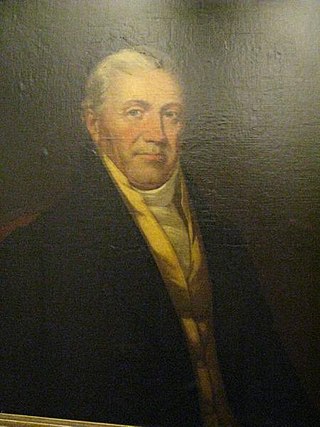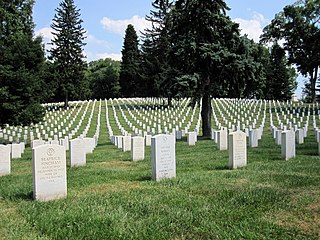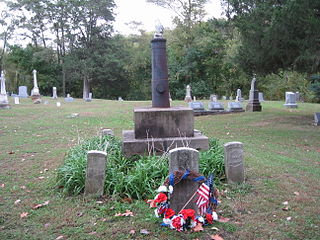Related Research Articles

A Tomb of the Unknown Soldier or Tomb of the Unknown Warrior is a monument dedicated to the services of an unknown soldier and to the common memories of all soldiers killed in war. Such tombs are located in many nations and are usually high-profile national monuments. Throughout history, many soldiers have died in war with their remains being unidentified. Following World War I, a movement arose to commemorate these soldiers with a single tomb, containing the body of one such unidentified soldier.

Enoch Poor was a brigadier general in the Continental Army during the American Revolutionary War. He was a ship builder and merchant from Exeter, New Hampshire.

Deborah Sampson Gannett, also known as Deborah Samson or Deborah Sampson, was born on December 17, 1760, in Plympton, Massachusetts. She disguised herself as a man, and served in the Continental Army under the name Robert Shirtliff – sometimes spelled Shurtleff or Shirtleff – and fought in the American Revolutionary War. She fought in the war for 17 months before her sex was revealed when she required medical treatment after contracting a fever in Philadelphia in 1783. After her real identity was made known to her commander, she was honorably discharged at West Point. After her discharge, Sampson met and married Benjamin Gannett in 1785. In 1802, she became one of the first women to go on a lecture tour to speak about her wartime experiences. She died in Sharon, Massachusetts, in 1827. She was proclaimed the Official Heroine of the Commonwealth of Massachusetts on May 23, 1983, and in 1985 the United States Capitol Historical Society posthumously honored "Deborah Samson" with the Commemorative Medal.
This is an incomplete list of the last surviving veterans of American wars. The last surviving veteran of any particular war, upon their death, marks the end of a historic era. Exactly who is the last surviving veteran is often an issue of contention, especially with records from long-ago wars. The "last man standing" was often very young at the time of enlistment and in many cases had lied about his age to gain entry into the service, which confuses matters further.

Christ Church Burial Ground in Philadelphia is an important early-American cemetery. It is the final resting place of Benjamin Franklin and his wife, Deborah. Four other signers of the Declaration of Independence are buried here, Benjamin Rush, Francis Hopkinson, Joseph Hewes, and George Ross. Two additional signers of the Declaration of Independence, James Wilson and Robert Morris, are buried at Christ Church just a few blocks away.

Joseph Plumb Martin was a soldier in the Connecticut Militia and Continental Army during the American Revolutionary War, and was mustered out as a 23-year-old Sergeant in a Sapper company. His published narrative of his experiences, re-discovered in the 1950s, has become a valuable resource for historians in understanding the conditions of a common soldier of that era, as well as the battles in which Martin participated.

Benjamin Pierce was an American politician who twice served as the governor of New Hampshire from 1827 to 1828 and from 1829 to 1830. Pierce fought during the American Revolutionary War before becoming a Democratic-Republican Party politician. He was the father of Franklin Pierce, the 14th president of the United States.

Peter Salem was an African-American from Massachusetts who served as a U.S. soldier in the American Revolutionary War. Born into slavery in Framingham, he was freed by a later master, Major Lawson Buckminster, to serve in the local militia. He then enlisted in the Continental Army, serving for nearly five years during the war. Afterwards, he married and worked as a cane weaver. A monument was erected to him in the late 19th century at his grave in Framingham.
Elijah Churchill was a soldier for the Continental Army during the American Revolutionary War.

Salem Street Burying Ground is a cemetery located at the intersection of Salem Street and Riverside Avenue in Medford, Massachusetts. The Salem Street Burying Ground was used exclusively from the late 17th century to the late 19th century for the burial of the town's wealthy. The cemetery was listed on the National Register of Historic Places in 1981.

The 1st Rhode Island Regiment was a regiment in the Continental Army raised in Rhode Island during the American Revolutionary War (1775–83). It was one of the few units in the Continental Army to serve through the entire war, from the siege of Boston to the disbanding of the Continental Army on November 3, 1783.

Culpeper National Cemetery is a United States National Cemetery located in the town of Culpeper, in Culpeper County, Virginia. Administered by the United States Department of Veterans Affairs, it encompasses 29.6 acres (120,000 m2) of land, and as 2021, had over 14,000 interments.

Cypress Hills National Cemetery is a 18.2-acre (7.4 ha) cemetery located in the Cypress Hills neighborhood of Brooklyn, New York City. It is the only United States National Cemetery in New York City and has more than 21,100 interments of veterans and civilians.

Lewis Capet Shepard was a Union Navy sailor during the American Civil War who received America's highest military decoration, the Medal of Honor, for his actions at the Second Battle of Fort Fisher. Due to a Navy clerical error however his citation and history will always record his first name as Louis.

The Commander-in-Chief's Guard, commonly known as Washington's Life Guard, was a unit of the Continental Army that protected General George Washington during the American Revolutionary War. Formed in 1776, the Guard was with Washington in all of his battles. It was disbanded in 1783 at the end of the war.
Esther Sumner Damon was cited as the last widow of the American Revolutionary War to receive a state pension.

Cato Mead is the only known Black Patriot buried west of the Mississippi River. Mead is buried in or near Montrose Cemetery in Montrose, Iowa.

The National Field of Honour is a military cemetery for Canadian and Allied Veterans and their loved ones. It is located in Pointe-Claire, Quebec, Canada. It is operated by the Last Post Fund.

The Revolutionary War Cemetery, also called the Old Salem Burying Ground, is located on Archibald Street, just off state highway NY 22 in the village of Salem, New York, United States. It is a 2.6-acre (1.1 ha) area with over a thousand graves, at least 100 of which are those of Revolutionary War dead or veterans.
Prince Estabrook was an enslaved black man and Minutemen Private who fought and was wounded at the Battles of Lexington and Concord, the initial engagements of the American Revolutionary War. An undated broadside from the time identified him as "a Negro Man", spelled his name Easterbrooks, and listed him among the wounded from Lexington, Massachusetts. Born around 1741, he was enslaved by the family of Benjamin Estabrook from whom he most likely took his name. He was freed.
References
- ↑ "Boland Burying Ground Sharon CT Headstones". Archived from the original on 2011-09-20. Retrieved 2012-03-05.
- ↑ http://records.ancestry.com/Elijah_Juckett_records.ashx?pid=16901249 [ user-generated source ]
- ↑ "Massachusetts soldiers and sailors of the Revolutionary War: A compilation from the archives, prepared and published by the Secretary of the Commonwealth in accordance with chapter 100, resolves of 1891". 1901.
- ↑ "Sharon Veterans Monument, a War Memorial".
- ↑ "Boland Burying Ground Sharon CT Headstones". Archived from the original on 2011-09-20. Retrieved 2012-03-05.